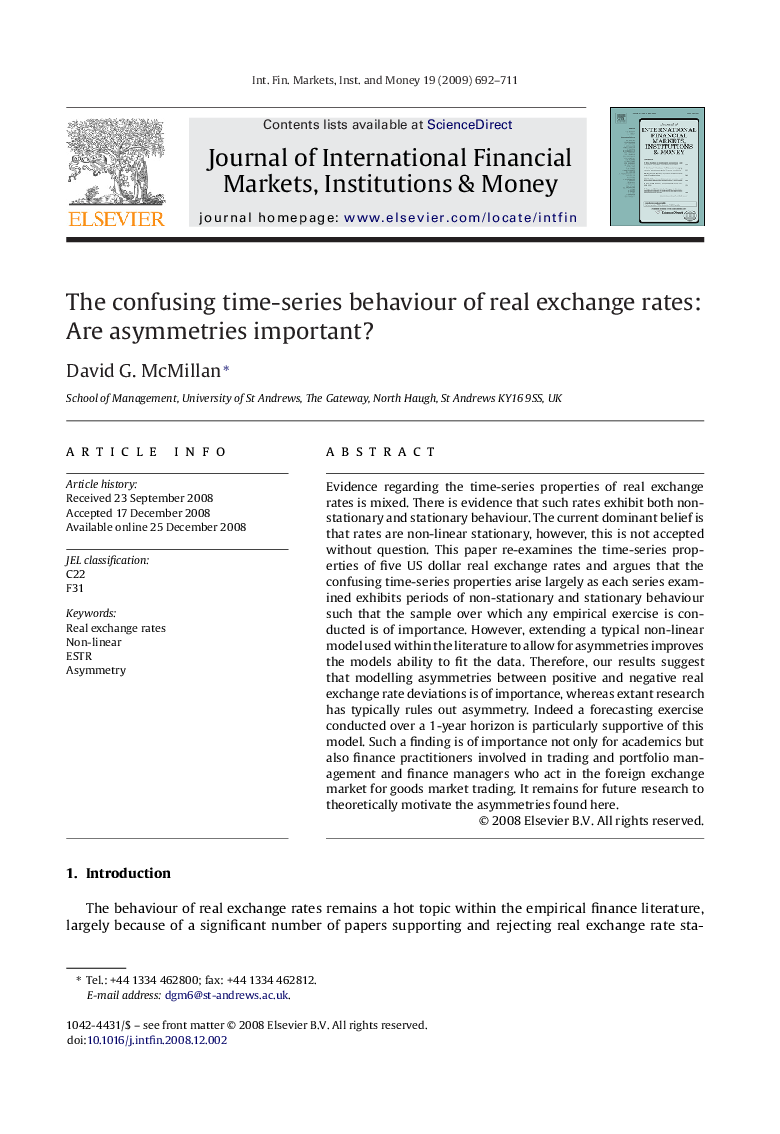| Article ID | Journal | Published Year | Pages | File Type |
|---|---|---|---|---|
| 964155 | Journal of International Financial Markets, Institutions and Money | 2009 | 20 Pages |
Abstract
Evidence regarding the time-series properties of real exchange rates is mixed. There is evidence that such rates exhibit both non-stationary and stationary behaviour. The current dominant belief is that rates are non-linear stationary, however, this is not accepted without question. This paper re-examines the time-series properties of five US dollar real exchange rates and argues that the confusing time-series properties arise largely as each series examined exhibits periods of non-stationary and stationary behaviour such that the sample over which any empirical exercise is conducted is of importance. However, extending a typical non-linear model used within the literature to allow for asymmetries improves the models ability to fit the data. Therefore, our results suggest that modelling asymmetries between positive and negative real exchange rate deviations is of importance, whereas extant research has typically rules out asymmetry. Indeed a forecasting exercise conducted over a 1-year horizon is particularly supportive of this model. Such a finding is of importance not only for academics but also finance practitioners involved in trading and portfolio management and finance managers who act in the foreign exchange market for goods market trading. It remains for future research to theoretically motivate the asymmetries found here.
Related Topics
Social Sciences and Humanities
Economics, Econometrics and Finance
Economics and Econometrics
Authors
David G. McMillan,
